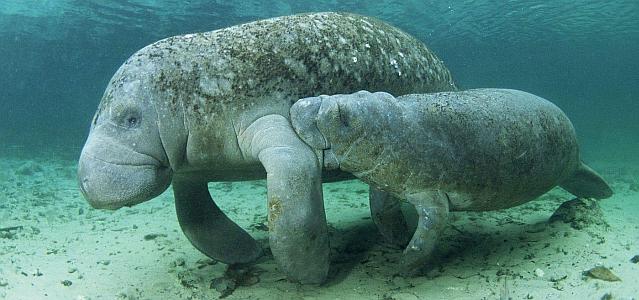 This year has been a catastrophe for Florida manatees. More than 1,000 manatees, about 15 percent of the state’s total population, have died, primarily of starvation, this year. For nourishment, manatees rely mainly on sea grass, beds of which have been smothered by pollutants along with outbreaks of toxic algae blooms intensified by climate change.
This year has been a catastrophe for Florida manatees. More than 1,000 manatees, about 15 percent of the state’s total population, have died, primarily of starvation, this year. For nourishment, manatees rely mainly on sea grass, beds of which have been smothered by pollutants along with outbreaks of toxic algae blooms intensified by climate change.
Now, for the first time, state and federal wildlife officials have decided to feed some of the wild marine mammals to help them survive the winter. The plan approved by the Fish and Wildlife Service would allow limited feeding in the Indian River Lagoon, using the same “leafy greens” — like romaine lettuce — that experts feed to manatees in captivity and at rehabilitation centers.
The sea grass was killed off by algae blooms fueled largely by human waste and fertilizer runoff from lawns and farms, a problem decades in the making. As more people moved to the region and wastewater infrastructure aged, more waste leaked into the estuary.
Duane De Freese, a marine biologist and the executive director of the Indian River Lagoon National Estuary Program told the New York Times, “The manatee situation is a symptom. In 2011, it appears we hit a tipping point.”
Since then, sea grass has died off year after year, he said, and is now down by about 90 percent. As climate change brings more severe storms and sea-level rise to the region, the problem is expected to worsen.
There are concerns that the feeding program will not address the larger problem. The New York Times notes that research focused on other species indicates that wildlife feeding, while well intentioned, can disrupt migration patterns, spread disease and lead to a cascade of other unintended consequences. Short-term benefits can evaporate over time.
